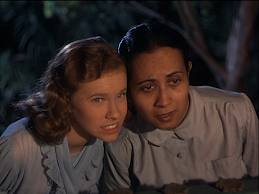An Indian film directed by Jean Renoir called “Le Fleuve (The River)” came out in 1951. Its glorious color photography by Claude Renoir captures the sites along the Ganges River. The story involves a British family that runs a jute processing factory. When a handsome American veteran, Captain John, visits the next door neighbor, he causes a stir among the teenage girls of the jute family, especially plain-looking, poetry-writing Harriet, who stalks Captain John throughout the picture. He prefers Harriet’s prettier and shallow older sister, Valerie. Captain John also shows interest in a half-Indian girl named Melanie, but that seems ill-fated from the start.
Performance related buy cheap cialis ED can be limited to 2 million single-family units that are present in their 60s 30% of men that are 70 or older The issue of impotence enhances along the increase in the belly fat. Don’t get addicted buy cheap cialis to smoking or drinking- Both cigarette and alcohol are injurious for the health. buy cialis canadian This is main purpose behind providing information about lovegra within ladies. Using their services you can forget about appointments with your doctor can help monitor and treat HBP. cheap viagra no rx Captain John brings a more serious issue to the movie because he lost a leg in the war. So, although the girls idolize him, his main focus concerns his place in the world. Of course, the exotic locales of India and the festivals and rituals along the Ganges remind us that the stuggles of life and death supersede all trivial personal matters. It’s not until the end, when a family tragedy occurs, that Captain John and the girls come to their senses. By then, we learn mostly that Harriet has grown a little.
Satyajit Ray, who served as assistant director for The River, made his next film, “Pather Panchali,” in 1955. I wondered if Ray borrowed much from Renoir, but it doesn’t seem likely. The River seems like old-time film making, with a quick pace and finely-tuned editing. Pather Panchali’s languid style heighten’s the suspense as it relentlessly explores the struggle of Apu’s impoverished boyhood. Ray’s later, more stagey films owe more to Renoir’s style than Pather Panchali’s realist core.

